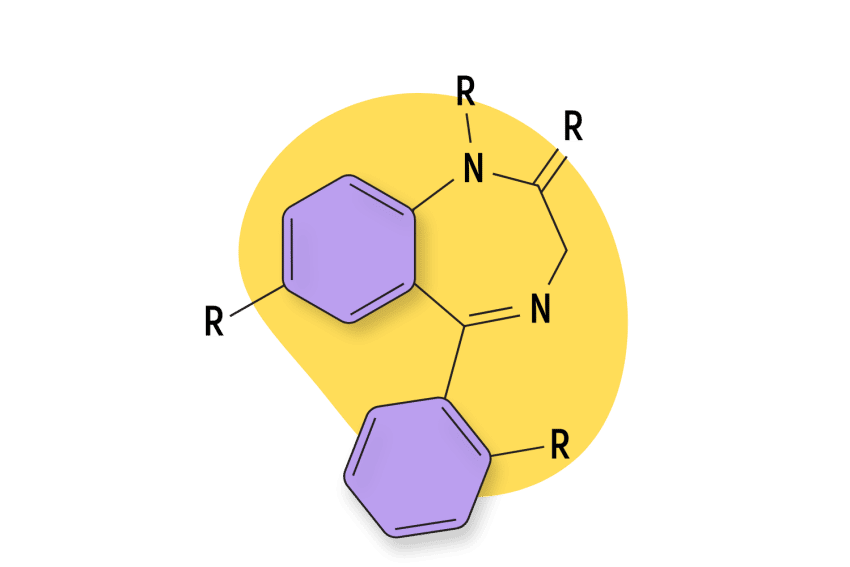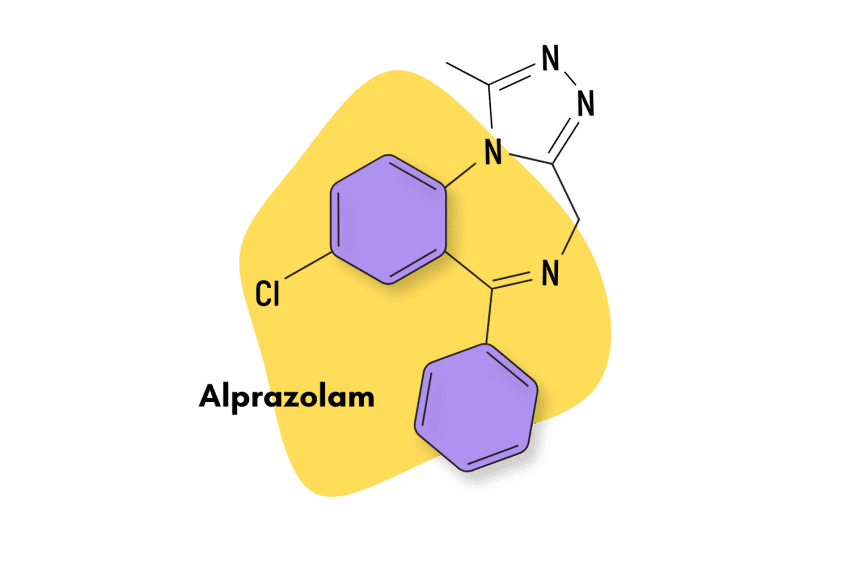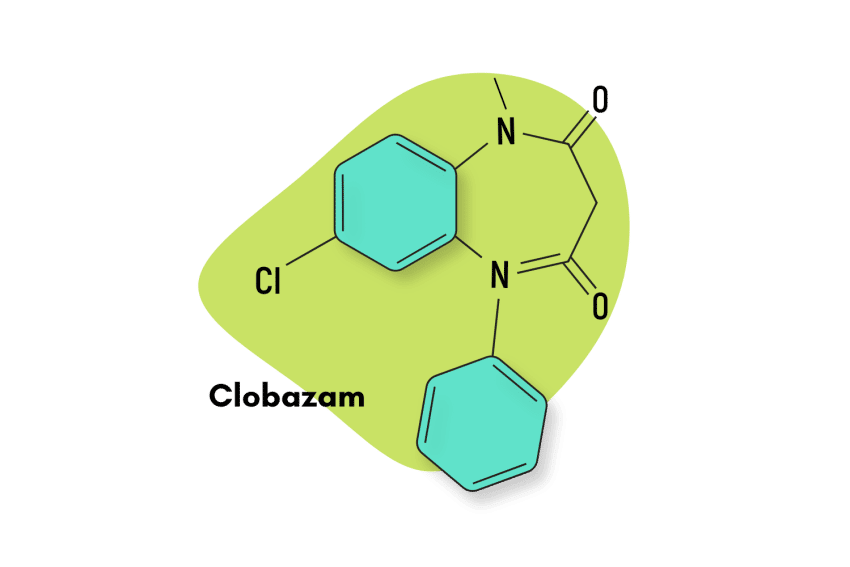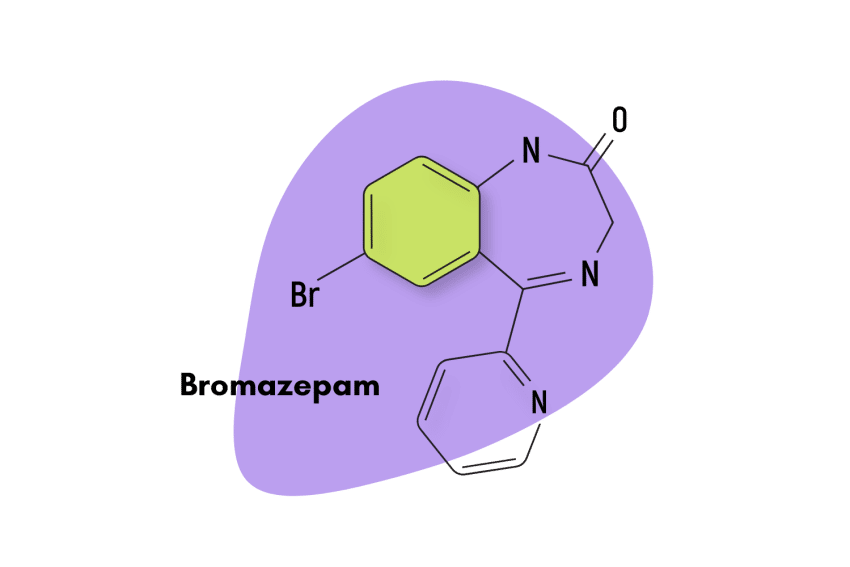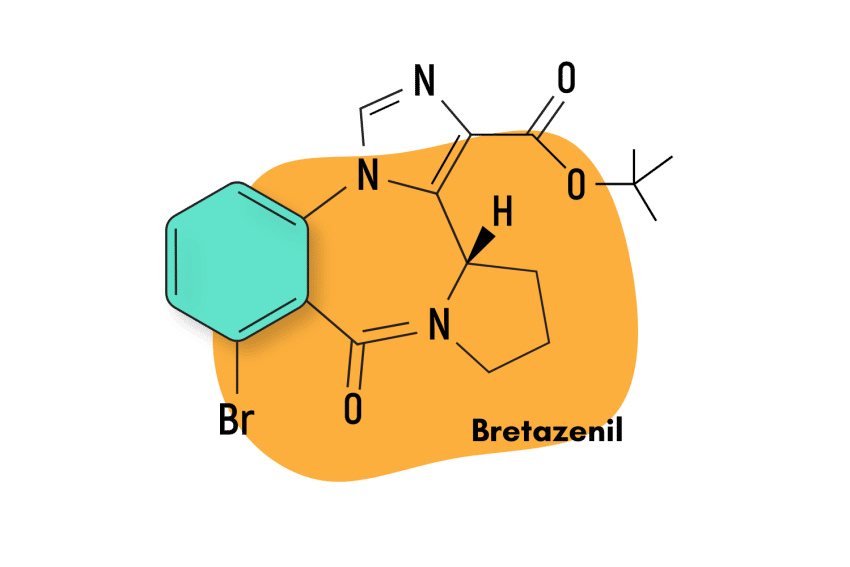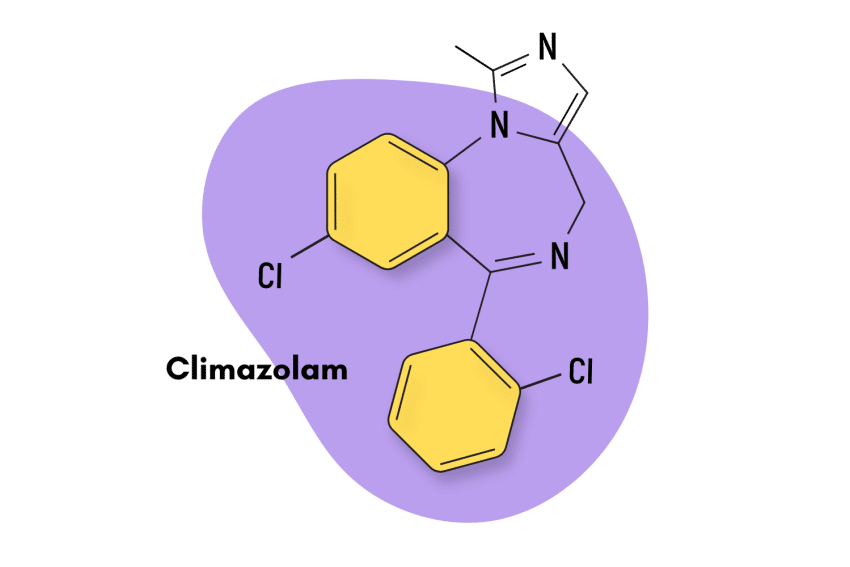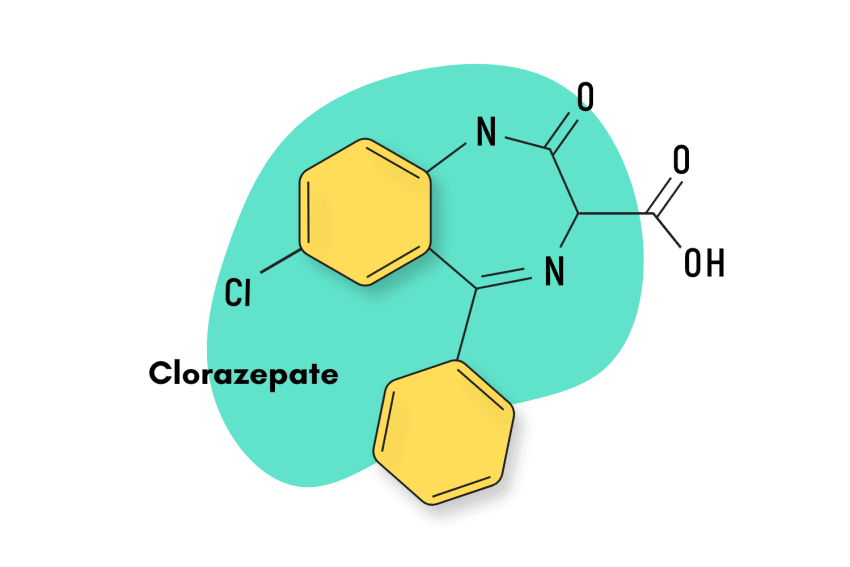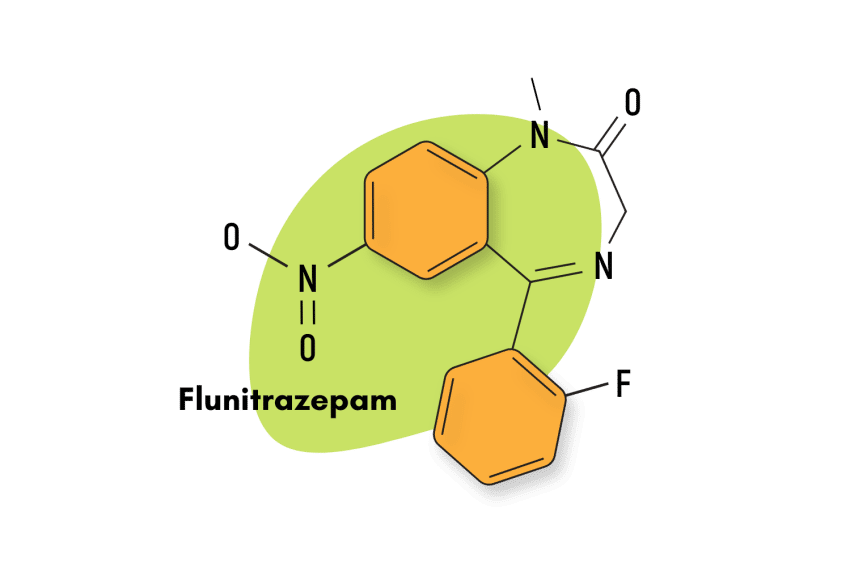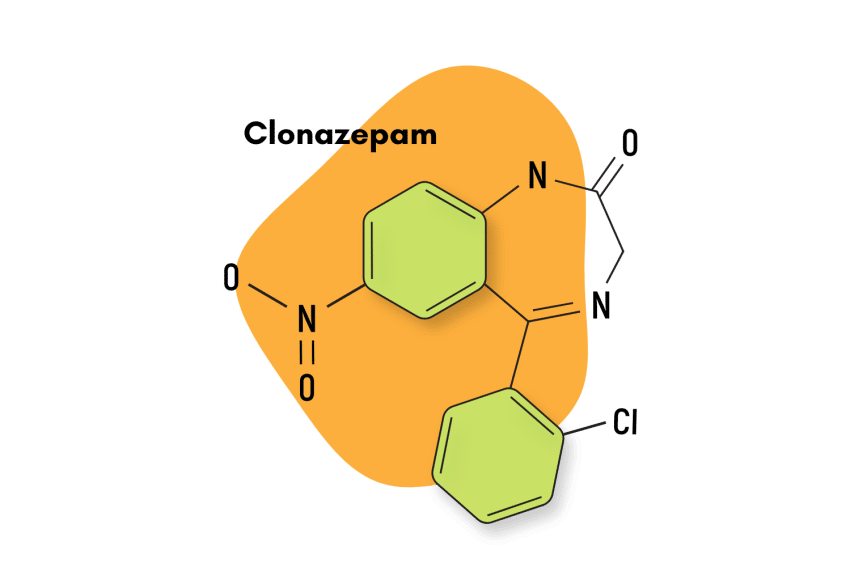Elfazepam Fact Sheet & Harm Reduction Guide
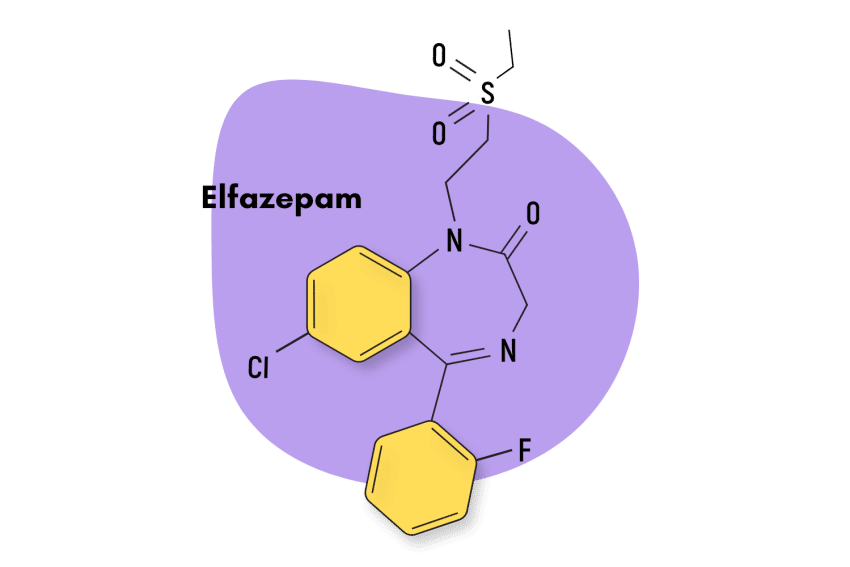
Most benzodiazepines produce a powerful anxiolytic (anti-anxiety) and sedative action. But elfazepam is different.
This compound offers potent orexigenic properties (appetite stimulant) and inhibits gastric acid secretion — among other gastrointestinal effects [1].
Although researchers are not quite sure how elfazepam produces these effects, it’s shown a lot of potential for inducing weak, undernourished animals to eat larger meals. Despite its promise, elfazepam has not yet been approved for use in humans or animals. There’s virtually no record of this drug being used recreationally.
Elfazepam Specs:
| Status: | Not Used |
| Common Dosage: | Unspecified |
| PubChem ID: | 65445 |
| CAS# | 52042-01-0 |
IUPAC Name:
7-chloro-1-(2-ethylsulfonylethyl)-5-(2-fluorophenyl)-3H-1,4-benzodiazepine-2-one
Other Names: N/A
Metabolism: The metabolism of elfazepam has not yet been subject to peer-reviewed studies.
Duration of Effects: Unknown
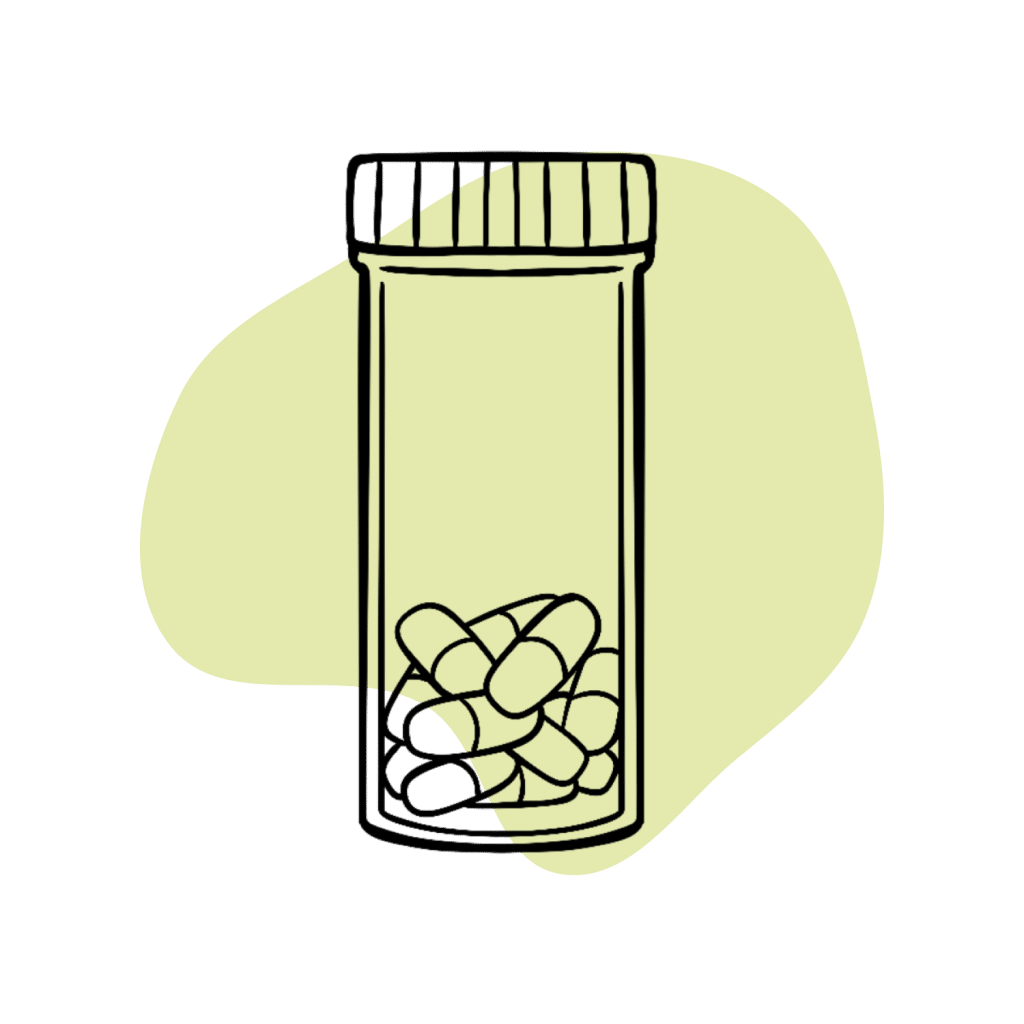
How Does Elfazepam Work?
In terms of its traditional benzodiazepine-like effects, elfazepam functions in the same manner as virtually all other 1,4-benzodiazepine compounds. This is to say it produces its effects through its agonistic modulation of GABA-A receptors.
However, when it comes to its gastrointestinal properties, which are the properties that interest researchers the most, the mechanism of action has not yet been determined [1].
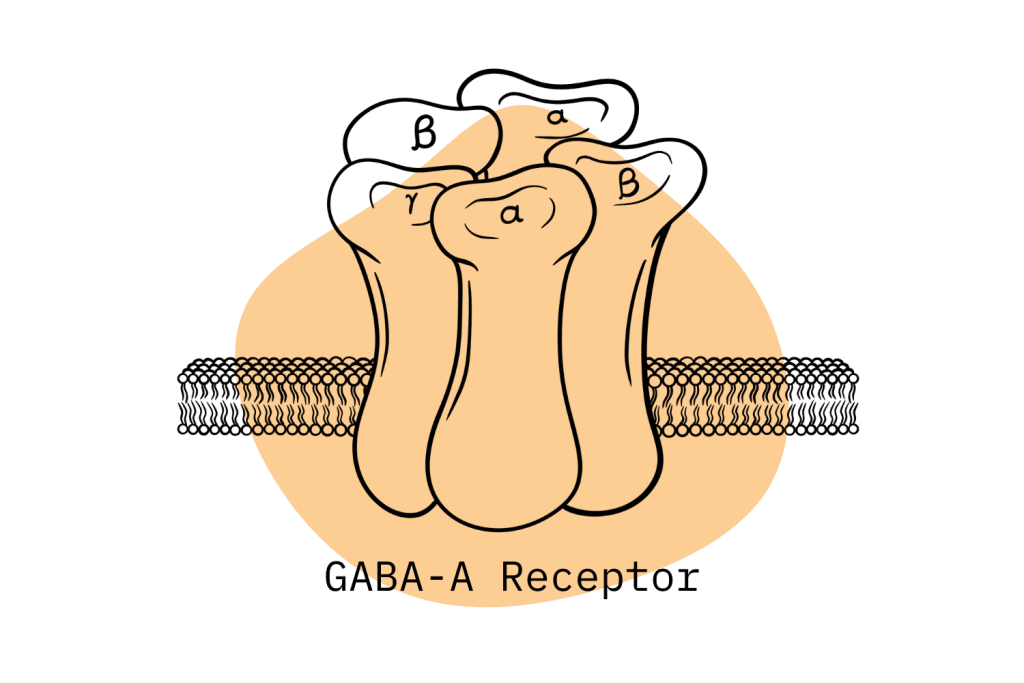
Is Elfazepam Safe? Risks & Side-Effects
There is no specific study we can cite to assess the risk level related to elfazepam use in humans.
Elfazepam is not an approved medication, and it does not seem to enjoy any popularity in designer drug markets, which suggests its psychoactive effects are not strong. Given elfazepam’s properties and the interest in developing a successful chemical feed intake stimulant to help with the performance of certain agricultural animals, a study looking into its veterinary safety would be more useful.
Nonetheless, elfazepam is still a 1,4-benzodiazepine and can allegedly produce hypnotic and anxiolytic effects. Due to the interaction of elfazepam with GABA receptors, we believe it carries a similar baseline risk associated with all benzodiazepines.
Side Effects of Elfazepam
Because of their common pharmacological nature, all non-atypical benzodiazepines share a common set of side effects and contraindications.
Common side effects associated with benzodiazepine use include:
- Blurred vision
- Confusion
- Constipation
- Dizziness
- Drowsiness
- Dry mouth
- Light-headedness
- Memory problems
- Muscle weakness
- Nausea (feeling sick)
- Slurred speech
- Unsteadiness (especially in older people, who may fall and experience injuries)
Benzodiazepine side effects tend to be strongest in benzos with high potency that have a strong affinity at GABA-A receptors. The good news, though, is they can usually be brought under control through a dosage reduction.
It’s likely that the novel effects associated with elfazepam produce side effects that are unique to it.
Benzodiazepine Withdrawal & Dependence
Physical dependence, as well as withdrawal symptoms, are well-known consequences of continued benzodiazepine use. Thus, it is crucial for current and potential benzodiazepines users to be fully aware of this risk and what they might do to avoid it.
Current benzodiazepine users should know the four factors that researchers have identified as being the most significant in the formation of a benzodiazepine dependence [3]:
- Daily benzodiazepine use for a period of more than four months
- High dose (the higher the dose, the higher the dependence liability)
- Sudden cessation of benzodiazepine use
- Use of a short-acting benzodiazepine over a longer or intermediate-acting one

Harm Reduction Tips: Elfazepam
Here are some tips and tricks for staying safe while using benzodiazepines:
- 🥣 Don’t mix — Mixing benzodiazepines with other depressants (alcohol, GHB, phenibut, barbiturates, opiates) can be fatal.
- ⏳ Take frequent breaks or plan for a short treatment span — Benzodiazepines can form dependence quickly, so it’s important to stop using the drug periodically.
- 🥄 Always stick to the proper dose — The dosage of benzos can vary substantially. Some drugs require 20 or 30 mg; others can be fatal in doses as low as 3 mg.
- 💊 Be aware of contraindications — Benzodiazepines are significantly more dangerous in older people or those with certain medical conditions.
- 🧪 Test your drugs — If ordering benzos from unregistered vendors (online or street vendors), order a benzo test kit to ensure your pills contain what you think they do.
- 💉 Never snort or inject benzos — Not only does this provide no advantage, but it’s also extremely dangerous. Benzos should be taken orally.
- 🌧 Recognize the signs of addiction — Early warning signs are feeling like you’re not “yourself” without the drug or hiding your habits from loved ones.
- ⚖️ Understand the laws where you live — In most parts of the world, benzodiazepines are only considered legal if given a prescription by a medical doctor.
- 📞 Know where to go if you need help — Help is available for benzodiazepine addiction; you just have to ask for it. Look up “addiction hotline” for more information where you live. (USA: 1-800-662-4357; Canada: 1-866-585-0445; UK: 0300-999-1212).
Elfazepam Drug Interactions
Mixing benzodiazepines with other drugs that depress the central nervous system (CNS) is extremely dangerous. When two compounds interact within the body together to depress the CNS in slightly different ways, the end result is an exponentially stronger effect. This can easily lead to an overdose or severe respiratory depression: the leading cause of death in drug overdoses.
This specific interaction poses such a threat that in 2020 the FDA required a change in the labels applied to benzodiazepines to properly reflect the danger that can come about through misuse. And it’s no secret why. The marked increase in drug-related deaths in the United States is mainly due to the concurrent abuse of depressant drugs, namely opioids and benzodiazepines.
Other drug interactions are likely — based on the impact this drug has on the digestive tract. It may alter the absorption of other medications, cause changes in the gut microbiome, or interact with liver metabolism.
Speak to your doctor before taking any benzodiazepine, especially if you have pre-existing medical conditions or are taking other prescription or recreational drugs.
Elfazepam FAQs
What are elfazepam’s effects on feeding intake?
A study reviewing the behavioral and physiological response of a variety of animals to elfazepam found the following results [1]:
- Elfazepam will override the feeding inhibition caused by amphetamine, heat stress, diet bulk, protein deficiency, and an additive with aversive flavor characteristics.
- While rumen fermentation per se is not influenced by elfazepam, ruminal and abomasal motility and secretory functions are reduced.
- The digestibility of some diets may be improved by the chemical. Elfazepam added to the feed of cattle and of sheep improved feed efficiency under a variety of conditions, but the response was variable.
- It has improved the performance of young animals during the transition from milk to solid feedstuffs and has been used successfully in the treatment of anorexia associated with disease states in a variety of species.
The study’s general conclusion was that elfazepam has the desirable characteristics to become a successful chemical feed stimulant.
Another study performed on cows found elfazepam to be capable of the following effects [2]:
- Elfazepam decreases rumen contractions and abomasal acid content in sheep. It also increases rumen fluid volume, digestibility and overall nutrient availability.
- Elfazepam has been theorized to decrease propulsive activity in the gastrointestinal tract, but the study found that it had no effect on slow wave frequency, action potential rate, contraction rate, or contraction force.
- Elfazepam was able to decrease abomasal pH content.
References
- Baile, C. A., & McLaughlin, C. L. (1979). A review of the behavioral and physiological responses to elfazepam, a chemical feed intake stimulant. Journal of Animal Science, 49(5), 1371-1395.
- Keim, D. A., Baile, C. A., Bolton, J. R., Wangsness, P. J., & Della Fera, M. A. (1979). Abomasal function following injections of elfazepam and 9-aza-cannabinol. Pharmacology Biochemistry and Behavior, 10(1), 63-70.
- Owen, R. T., & Tyrer, P. (1983). Benzodiazepine dependence. Drugs, 25(4), 385-398.

